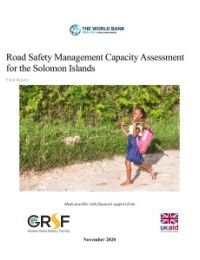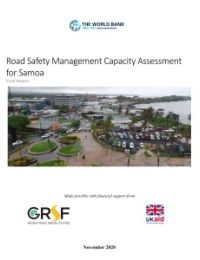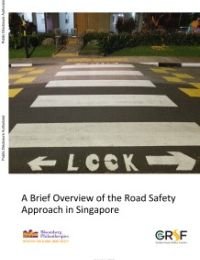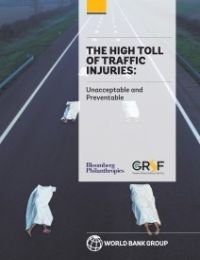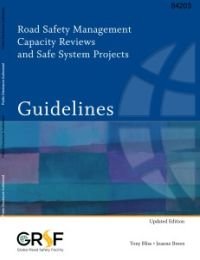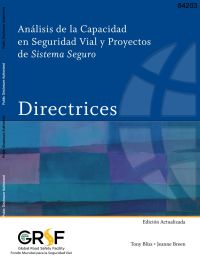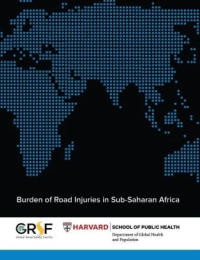Publications
41-48 of 48
-
Road Safety Management
Road Safety Management Capacity Assessment for the Solomon Islands
February 2021
-
-
Utilize GRSF recommended methodology to gain a thorough understanding of road safety management capacity;
-
Assess institutional management arrangements as an important focus of the analysis of the road safety system in Samoa;
-
Consider the existing national road safety strategy—Samoa National Action Plan (SNAP) for the Decade of Action for Road Safety 2011-2020—and propose updates for the next period;
-
Provide capacity building on crash investigation and evidence-based road safety measures to ensure success and sustainability, with a focus on vulnerable road users such as females, children, and persons with disabilities; and,
-
Focus on crash data management, including providing hands on capacity building and crash analysis.
-
-
Road Safety Data
DRIVER: The World Bank’s Sustainable Solution for Road Crash Data Management
March 2018
-
-
Cutting traffic deaths and injuries by half could add 7 to 22% to GDP per capita over 24 years in select countries
-
Welfare benefits equivalent to 6 to 32% of GDP per capita could be realized over the same period if traffic deaths and injuries were halved
-
Road traffic injuries are the single largest cause of mortality and long-term disability among people aged 15-29, prime working age
-
Reducing the number of RTIs leads to long-term national income growth. This correlation is easy to establish as RTIs are the single largest cause of mortality and long-term disability among young people aged 15-29 (prime working age).
-
Significant long-term income growth—7 to 22% increase in GDP per capita over 24 years—can be achieved by halving road traffic deaths and injuries, in line with the current UN targets.
-
The study goes beyond productivity or economic gains, and highlights the broader welfare benefits associated with reducing road traffic mortality and morbidity, adding years of life free of injuries and lasting disabilities. This recognizes that GDP is an imperfect measure of social welfare, as it does not factor health benefits. The study finds welfare benefits equivalent to 6 to 32% of the national GDP can be realized from reducing road deaths and injuries by 50% over 24 years.
-
By maximizing healthy years of life, free of injuries and disabilities, actions to reduce road traffic injuries can help countries increase productivity, enhance the well-being of their populations, and build human capital—a key developmental priority for the World Bank.
-
Road safety goes beyond the transport sector, with a direct impact on public health, societies, and economies. Likewise, because road safety is an inherently cross-sectoral issue, real progress can only happen if all relevant stakeholders unite their efforts.
-
Road Safety Management
Road Safety Management Capacity Reviews and Safe System Projects Guidelines
May 2013
-
Specify a management and investment framework to overcome institutional capacity barriers and support the successful implementation of road safety interventions;
-
Provide practical procedures designed for application at a country level to accelerate knowledge transfer and sustainably scale up investment to improve road safety results;
-
Ensure that institutional strengthening initiatives are properly sequenced and adjusted to the absorptive and learning capacity of the country concerned.
-
Road Safety Management
Análisis de la Capacidad en Seguridad Vial y Proyectos de Sistema Seguro (Spanish)
May 2013
- Especificar un marco de gestión e inversión para superar las barreras de capacidad institucional y apoyar la implementación exitosa de intervenciones de seguridad vial;
- Proporcionar procedimientos prácticos diseñados para su aplicación a nivel de país para acelerar la transferencia de conocimientos y aumentar de manera sostenible la inversión para mejorar los resultados de seguridad vial;
- Garantizar que las iniciativas de fortalecimiento institucional estén debidamente secuenciadas y ajustadas a la capacidad de absorción y aprendizaje del país en cuestión.
-
- Road injury deaths are severely underreported in most sub-Saharan countries. Our estimates are often six times those of official government statistics. In Nigeria, they are 14 times the official statistics of the national road death toll.
- Road injuries killed 231,000 people in sub-Saharan Africa in 2010, accounting for almost one-fifth of the global road injury death toll. In addition, there were over 8 million non-fatal injuries, of which 885,000 were severe enough to warrant hospital admission if adequate access to medical care were available. The combined burden of non-fatal road injuries in sub-Saharan Africa exceeded 14 million healthy life years lost.
- Western, Central and Eastern sub-Saharan Africa have the highest road injury death rates of any global region. The death rate in Western sub-Saharan Africa is more than four times the rate in Western Europe. • Road injuries are the 8th leading cause of death in sub-Saharan Africa and the 10th leading cause of healthy life years lost. The public health burden of road injuries exceeds that from tuberculosis and maternal disorders.
- Deaths due to road injuries have grown by 84% in sub-Saharan Africa since 1990, almost twice the global increase. The Western and Southern regions of sub-Saharan Africa had the highest growth in road deaths of any region in the world, more than doubling over this period.
- Road injuries are the 7th leading cause of death in males in sub-Saharan Africa. They are the 13th leading cause of death in females, compared with 18th globally. The road injury death rate for females in Western sub-Saharan Africa is more than twice the global average and almost five times the rate in Western Europe.
- Road injuries pose a high burden over the entire life course in sub-Saharan Africa, impacting not just young adults but also children and the elderly. Among children aged 1-4 years, road injuries are the 8th leading cause of death in the region. Among adults aged 70+ years, road injuries are the 12th leading cause of death and 14th leading cause of healthy life years lost, compared with 26th and 23rd globally.
- Pedestrians comprise 44% of road deaths in sub-Saharan Africa, substantially more than the global average of 35%. The rate of pedestrian deaths in Western sub-Saharan Africa is 8 times the rate in Western Europe.
- Nigeria has the highest road injury death rate (52.4 per 100,000 people) of any country globally. Mozambique has the third highest death rate (46.7 per 100,000). These rates are more than 15 times the death rates in Sweden, UK, and the Netherlands, which have among the lowest death rates globally.
- Four countries (Nigeria, Ethiopia, South Africa, and Sudan) together account for half the road injury death toll of sub-Saharan Africa.
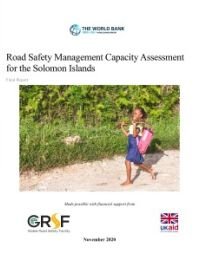
This Road Safety Management Capacity Assessment (RSMCA) seeks to gain a broad understanding of the Solomon Island Government road safety management capacity in order to support the country's development of a national strategy and plan of action to improve road safety outcomes, and subsequently implement those actions effectively.
The RSMCA follows the seven critical road safety institutional management functions (Bliss and Breen 2013) to identify key challenges and provide recommendations for improvement in road safety management, and similarly addresses the Safe System pillars for the interventions level. The seven institutional management functions include: results focus; coordination; legislation; finance and resource allocation; promotion and advocacy; monitoring and evaluation, and research and development of knowledge transfer.
The Safe System pillars include road safety management; safe roads and mobility; safe vehicles; safe road users, post-crash care; and safe speeds. As such, the RSMCA outlines key findings and recommendations relating to both the road safety institutional management functions within the Solomon Islands, and the Safe System Approach, whilst also identifying targeted priority next steps to address road crash death and serious injury in the country.
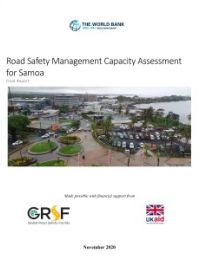
The Road Safety Management Capacity Assessment (RSMCA) is an activity within a broader Advisory Services and Analytics (ASA), which aims to gain a holistic and thorough understanding of the road safety management capacity of three selected Pacific Island Countries (PICs)—Samoa, the Solomon Islands and Vanuatu—in order to support their respective governments to develop national strategies and plans of action to improve road safety outcomes, with a focus on crash data management. The ASA will also support a pilot of the World Bank’s Data for Road Incident Visualization, Evaluation, and Reporting (DRIVER) road crash database in Samoa and provide hands on capacity building in crash analysis.
The ASA is being funded by a Global Road Safety Facility (GRSF) grant from the United Kingdom Agency for International Development (UK AID). The GRSF grant will help the Government of Samoa (GoS) to have a clear image of their road safety situation, risks and challenges, and further on to establish the basis for a national crash database. To ensure sustainability through capacity building and awareness-raising activities, knowledge will be shared with local stakeholders.
The key objectives of this ASA are as follows:
An auxiliary objective is to build capacity to use crash data to identify problems and implement road safety evidence-based measures in Samoa. Furthermore, given the negative impacts of severe weather events on road safety, which will be further exacerbated by climate change, the ASA will help to address the way that road safety is managed in the face of climate change, by training police officers to gain better skills in crash investigation.
The results from the DRIVER pilot in Samoa will be shared with counterparts in selected other PICs, with the aim of scaling up the system across the region. Only with accurate data can road safety be effectively managed and improved, and results measured. In support of this, as of October 2019, the World Bank’s Environmental and Social Framework (World Bank 2019) calls for road safety to be considered on all World Bank-funded projects.
The World Bank is also currently providing assistance to the road sector in Samoa through several projects, including the Samoa Climate Resilient Transport Project (SCRTP), which commenced in 2018. SCRTP will support the GoS to improve the climate resilience of the road network and provide key assistance required to contribute towards effectively managing climate resilient and safe road sector assets. One of the sub-components of SCRTP is dedicated to establishing and operationalizing a database for recording and analyzing road crash data.
The database will combine the existing siloed data, housed in different government agencies, into a single readily accessible platform under the Ministry of Work, Transport and Infrastructure (MWTI). The system will make use of DRIVER, to be piloted through this road safety ASA. SCRTP has other sub-components and activities focused on road safety, such as Road Safety Audits for project roads, a driver licensing training pilot focusing on women, and a road safety engineering technical assistance activity. This GRSF ASA will provide crucial data and insight for the successful delivery of the road safety program under SCRTP, plus other ongoing World Bank-financed projects.
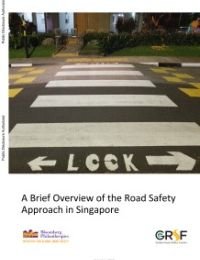
The report introduces how the Safe System Approach works, with a focus on road infrastructure and road safety engineering best practices from one of the best performing countries in Southeast Asia and the Pacific, Singapore.
Singapore roads are not only considered the safest in the region, they rank among the safest globally. Road safety management rules and regulations implemented in the country have resulted in significant strides in managing the effects of collision factors related to roadway design, human behavior, and vehicle attributes. As a result, road safety statistics have shown that fatalities on the Singapore road network have been steadily declining over the past decade. This is leading to a desire on the part of neighboring countries to follow Singapore's example and learn from its experience.
In order to mitigate collisions attributed to vehicle inadequacies or defects, one of the measures taken in Singapore was to enforce a strict vehicle import policy. Vehicle imports are permissible from countries that have adopted and comply with recognized high vehicle safety standards. Vehicle safety compliance is particularly focused on 52 items specified by the Land Transport Authority (LTA). In addition to strict vehicle import standards, Singapore enforces a strict vehicle quota system, which regulates the number of vehicles on the road network. Additionally, vehicles are required to undergo frequent inspections. Cars between 3 and 10 years old are required to have a biennial inspection, and cars older than 10 years are required to undergo annual inspections.
Furthermore, taxis are required to undergo inspections every six months. Road safety education and driver education are core tenants of Singapore's roads safety strategy. Road safety education is predominately undertaken by the Singapore Traffic Police, but nongovernmental organizations such as the National Security Coordination Secretariat contribute significantly to road safety education in Singapore.
Document also available in : Thai, Bahasa (Indonesian), Bahasa (Indonesian), Vietnamese

If you are reading this, you probably already know that 1.3 million people are killed on the world’s roads each year and another 20-50 million are seriously injured – 90 percent of these tragedies occur in developing countries. Having such figures help us understand the gravity of the epidemic we are facing; however, when we look at most low- and middle-income countries’ road crash data, the official numbers often do not match up with the reality of their roads.
Many road crashes go un-reported, certain incidents – such as those involving cyclists or property damage-only – are under-reported, and in a vast number of records, the data are incomplete (lacking even the location of the crash). Being able to efficiently and accurately collect, analyze, and report road crash data, is the first step to tackle this problem, and this is where DRIVER comes into play.
Developed by the World Bank in 2013, the Data for Road Incident Visualization, Evaluation, and Reporting (DRIVER) system, is a free web-based, open-source platform that improves the collection, management, analysis, and reporting of road crash data by enabling multiple agencies such as the police, health care providers, and local/national government agencies, to geo-reference road incidents in the same database in real time. It was first piloted in two Philippine cities, Cebu and Manila and since then, the GRSF has supported the improvement and deployment of DRIVER through workshops, pilot projects, implementation support and scaleup in countries such as Brazil, Bangladesh, India, Kazakhstan, Laos, Thailand, Vietnam, and Saudi Arabia.
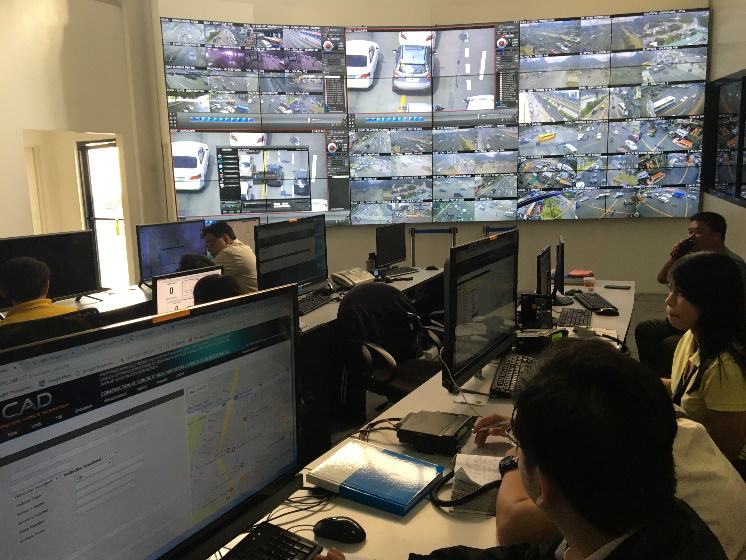
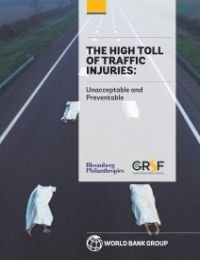
Key Findings ⌵︎
Each year, 1.25 million people lose their lives on the world’s roads and another 20 to 50 million are seriously injured. The tragic loss from a road traffic death or serious injury is compounded by the harm to households and social networks. A disproportionate 90% of road traffic injuries (RTIs) occur in low- and middle-income countries (LMICs), representing a major public health and economic burden. This is an eminently preventable problem that is critical to the development agenda. Unfortunately, due to lack of solid data, the impact of road injuries on economic growth and social welfare has been difficult to assess.
A new World Bank report funded by Bloomberg Philanthropies, The High Toll of Traffic Injuries: Unacceptable and Preventable, looks to fill the gap. It proposes a comprehensive methodology to quantify both the income growth and social welfare benefits that safer roads could bring to developing countries. The analysis is based on data collected from 135 countries over 24 years, and focuses on China, India, the Philippines, Tanzania, and Thailand—five geographically, demographically and economically diverse LMICs.
The study shows that reducing the number of RTIs in developing countries not only increases income growth, but also generates substantial welfare benefits to societies.
Key findings from the report include:
> Press Release: Road Deaths and Injuries Hold Back Economic Growth in Developing Countries

The Road Safety Management Capacity Reviews and Safe System Projects Guidelines have been designed to assist country road safety professionals, World Bank and regional development bank staff, international consultants, community groups, private sector organizations, and all other global, regional and country partners and stakeholders to conduct capacity reviews and prepare follow-up road safety projects in a variety of low and middle-income countries and investment settings.
The purpose of the Guidelines is to:
The Guidelines emphasize managing for results and the associated strengthening of country road safety management systems, with special attention being paid to the role of the lead road safety agency in ensuring institutional effectiveness and efficiency in program delivery. They highlight the importance of addressing all elements of the road safety management system, taking a staged approach to country road safety investment, and targeting the highest concentrations of deaths and injuries across the road network.
For more information visit this page.
This report is also available in:
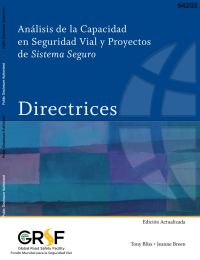
Las Directrices para los proyectos de sistemas seguros y las revisiones de la capacidad de gestión de la seguridad vial se han diseñado para ayudar a los profesionales de la seguridad vial de los países, al personal del Banco Mundial y de los bancos regionales de desarrollo, a los consultores internacionales, a los grupos comunitarios, a las organizaciones del sector privado y a todos los demás socios y partes interesadas mundiales, regionales y nacionales a realizar revisiones de la capacidad y preparar proyectos de seguimiento de la seguridad vial en una variedad de países de ingresos bajos y medios y entornos de inversión.
El propósito de las Directrices es:
Las Directrices hacen hincapié en la gestión para resultados y el fortalecimiento asociado de los sistemas de gestión de la seguridad vial de los países, prestando especial atención al papel del organismo líder de seguridad vial para garantizar la eficacia y eficiencia institucional en la ejecución del programa. Destacan la importancia de abordar todos los elementos del sistema de gestión de la seguridad vial, adoptar un enfoque por etapas para la inversión en seguridad vial del país y centrarse en las mayores concentraciones de muertes y lesiones en toda la red de carreteras.
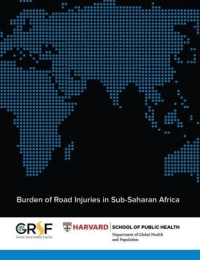
The 2010 Global Burden of Disease (GBD-2010) was a systematic effort to quantify the comparative magnitude of global health loss due to 291 diseases and injuries, 67 risk factors, and 1,160 sequelae by age, sex, and country from 1990 to 2010. The project was led by the Institute for Health Metrics and Evaluation (IHME) and included a consortium of academic institutions. The World Bank Global Road Safety Facility commissioned a special effort at Harvard University to improve the estimates of road injuries in sub-Saharan Africa generated as part of GBD-2010 by incorporating more data and better methods for the region.
Executive Summary
The UN Decade of Action for Road Safety 2011-2020 calls on national governments in sub-Saharan Africa and worldwide to direct substantial resources to stem the increasing burden of road traffic injuries. Bringing such attention to road safety requires demonstrating the importance of the problem relative to other major threats that currently confront sub-Saharan Africa. Therefore, in this study, we estimate the burden of road injuries relative to other health issues in the region through a systematic and scientific effort to quantify the comparative magnitude of health loss due to all diseases and injuries. We track the relative evolution of diseases and injuries since 1990 to show the increasing importance of road injuries to the health and development agenda in sub-Saharan Africa. We find that:
Road safety has emerged as an important health priority in sub-Saharan Africa. Trends over the last two decades show that road injury rates in the region have remained at among the highest in the world even though substantial improvements are being made in controlling other diseases, such as tuberculosis, malaria, and diarrheal disease. Unless significant preventive efforts are undertaken, road safety will continue to climb in regional health rankings during the UN Decade of Action for Road Safety. National governments and the international development community need to prioritize road safety in the region and implement the recommendations of the 2004 World Report on Road Traffic Injury Prevention.

